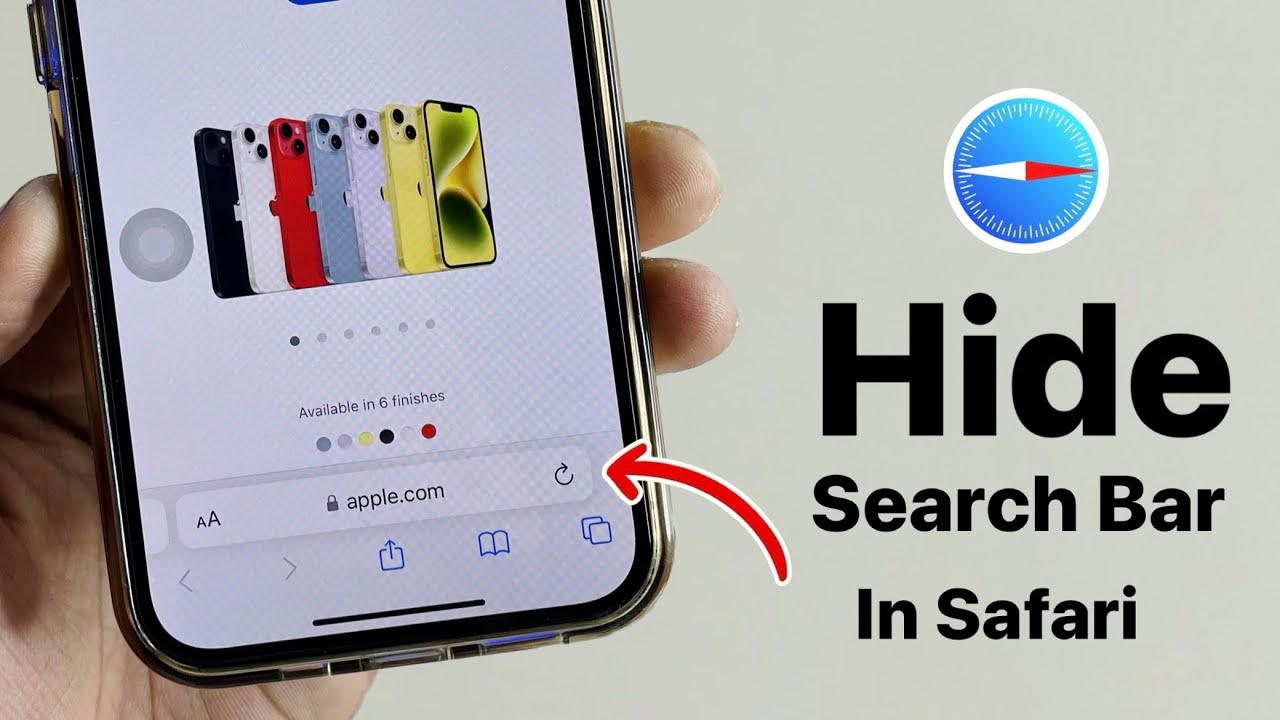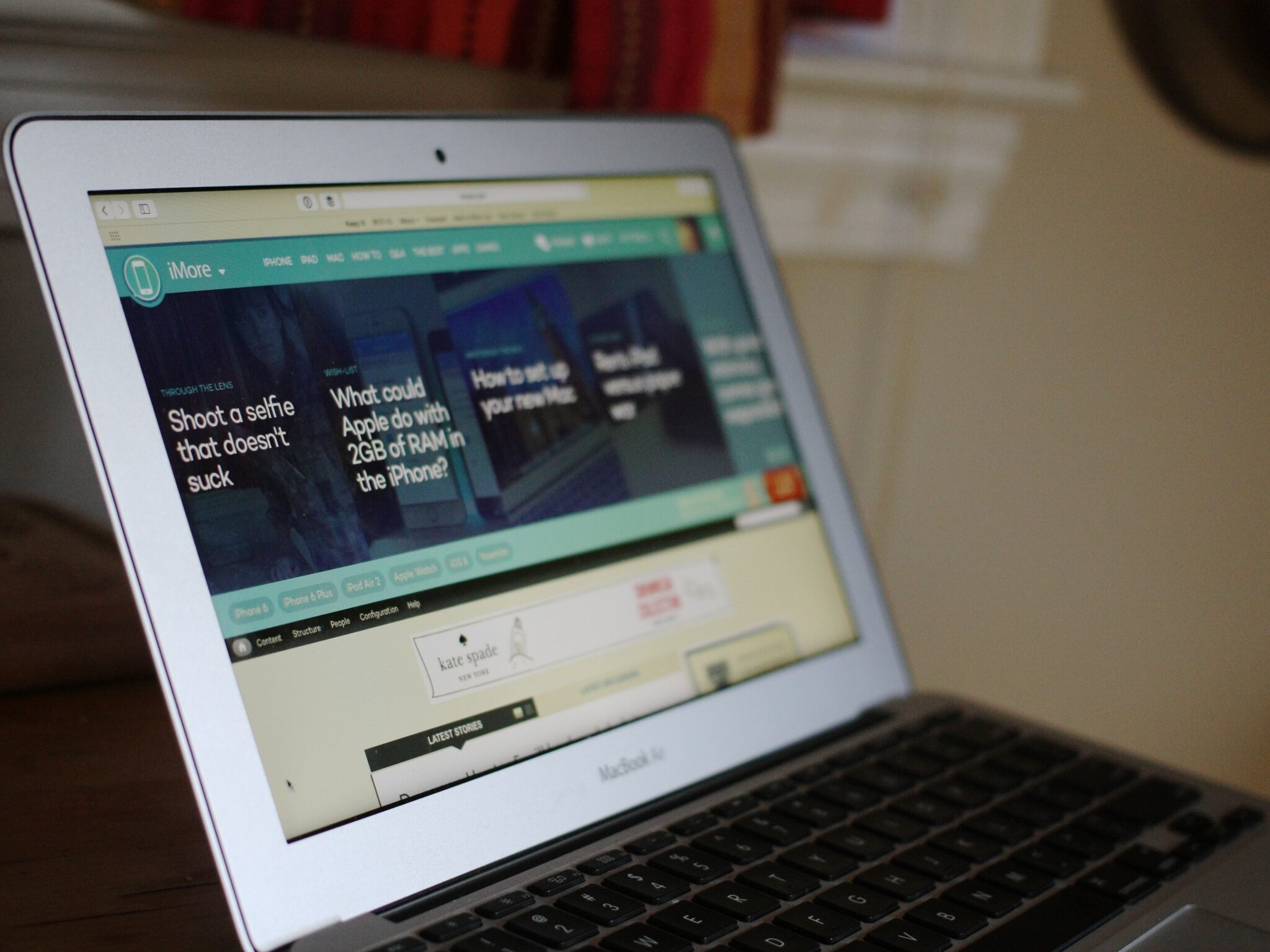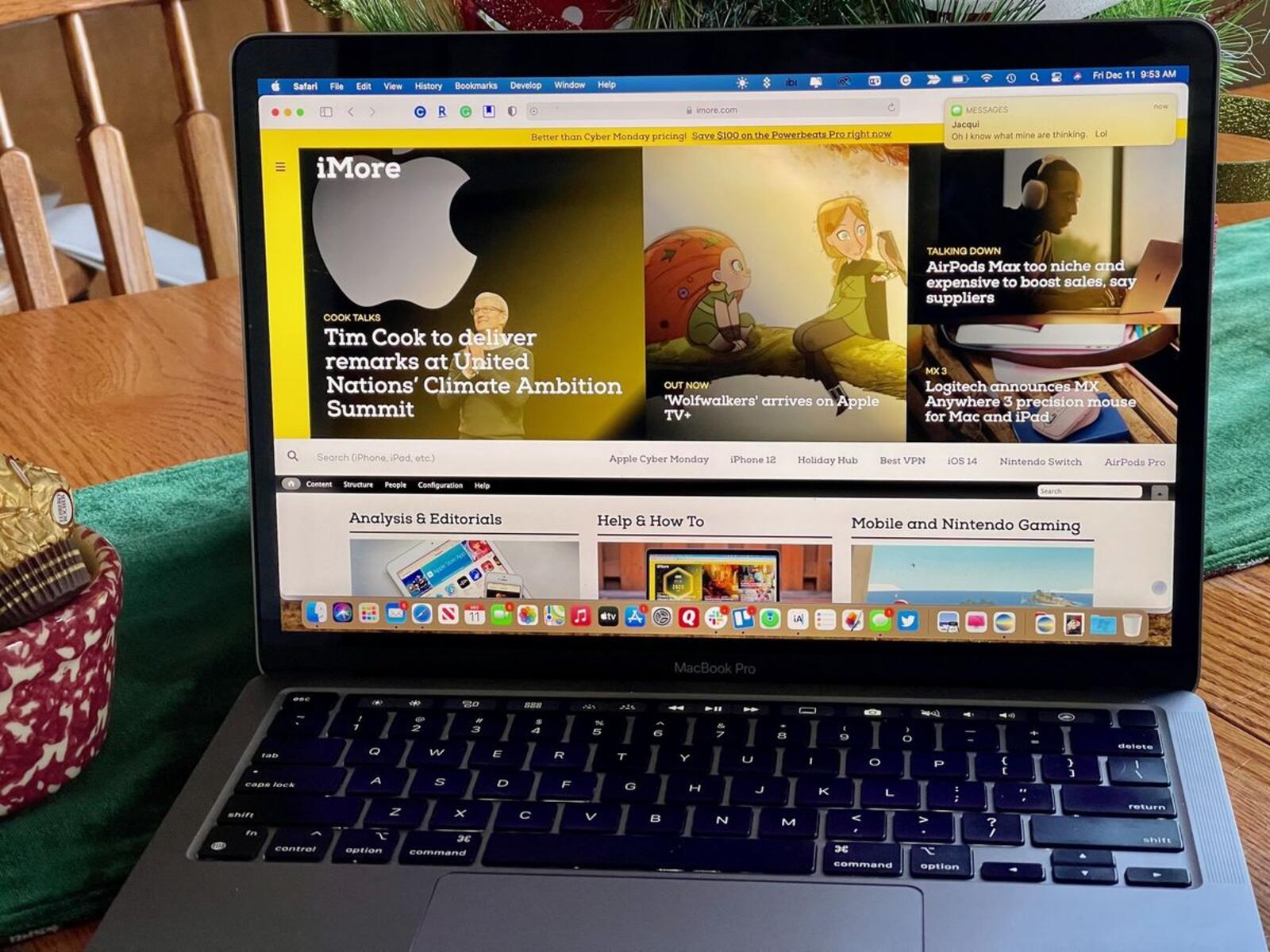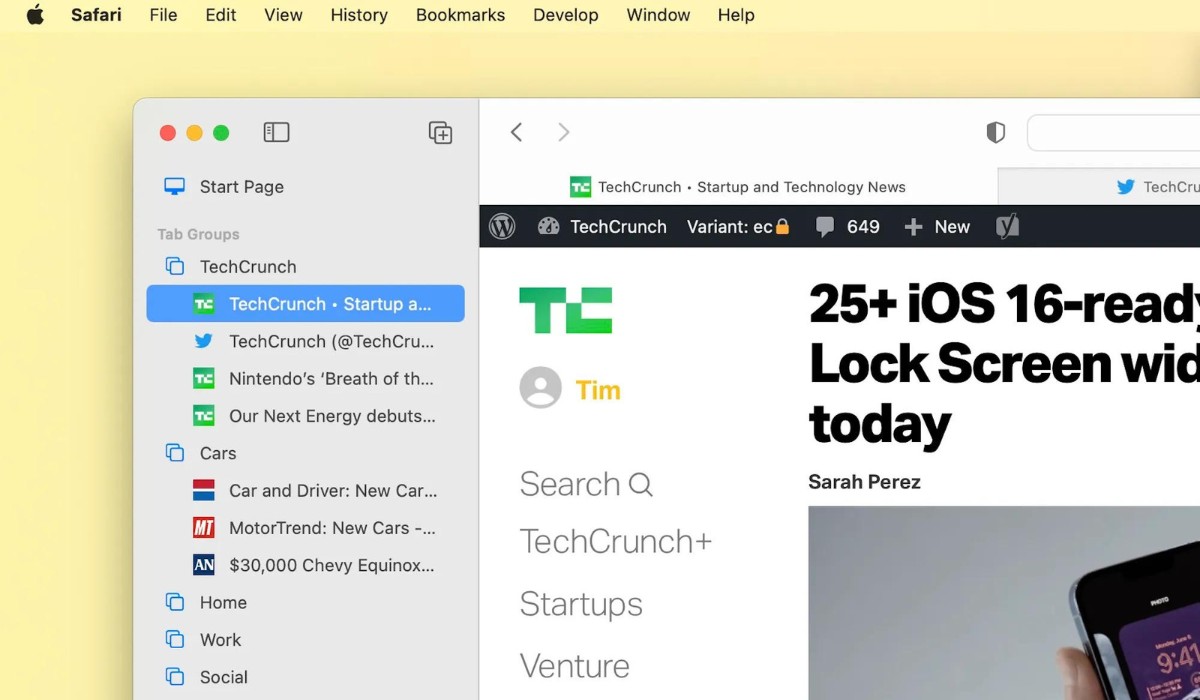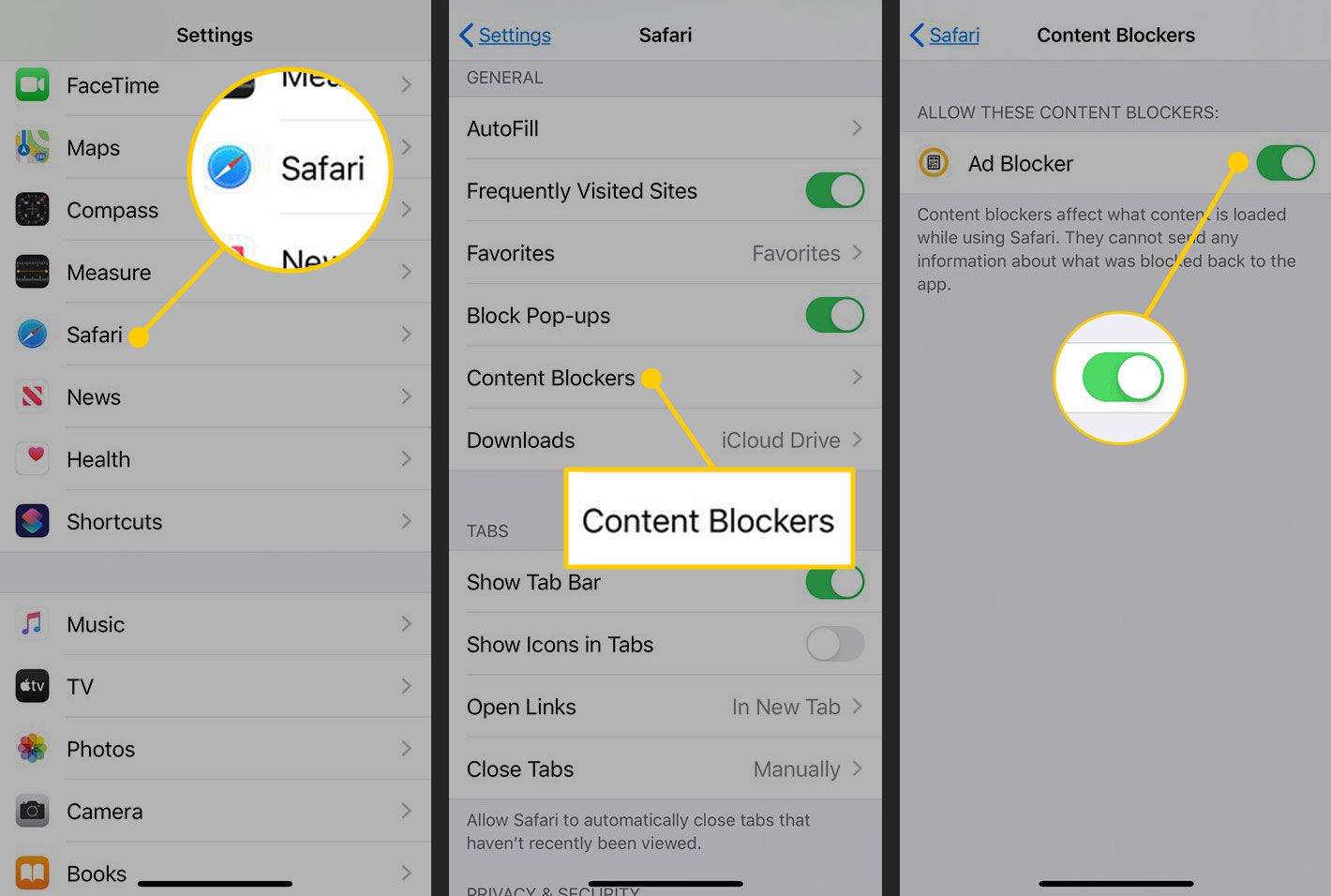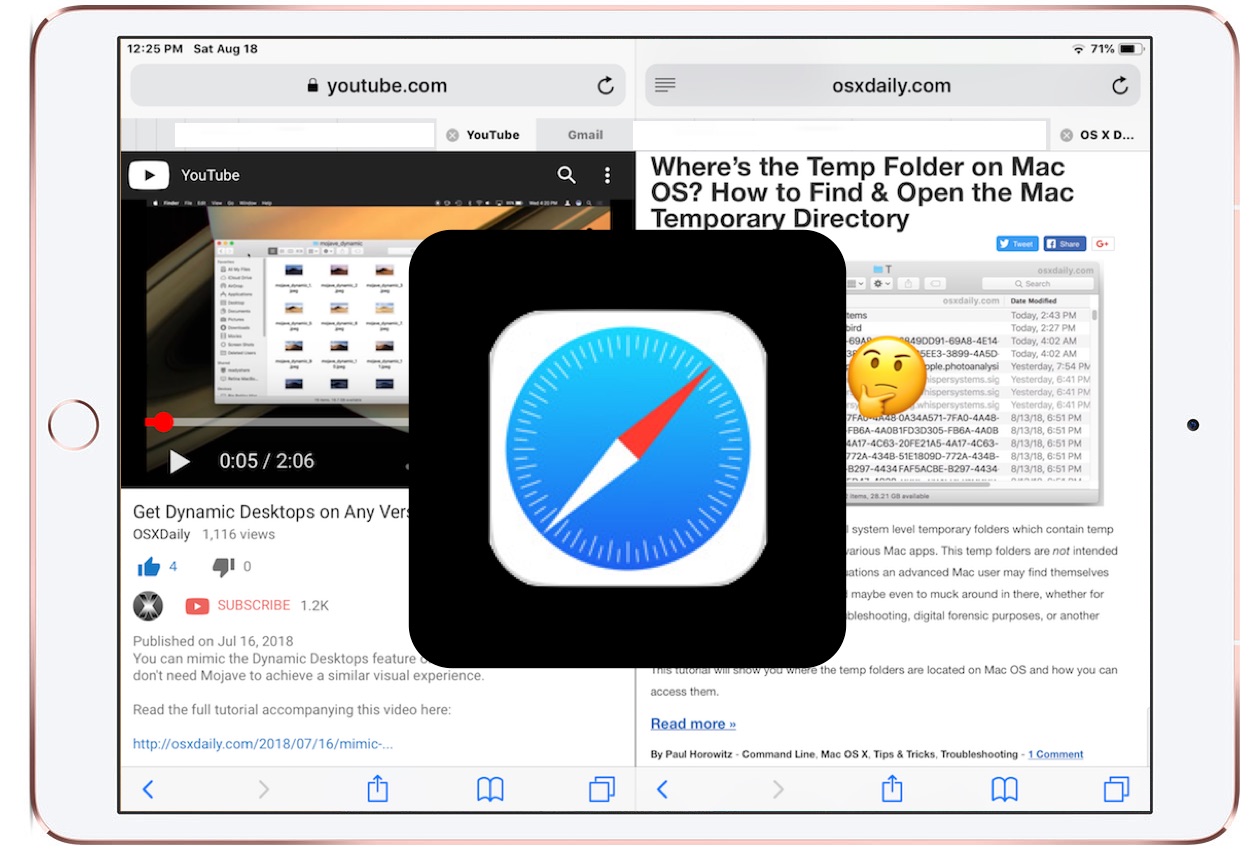Introduction
Safari, the default web browser for Apple devices, offers a seamless and intuitive browsing experience. However, the toolbar at the top of the browser window can sometimes be distracting or take up valuable screen real estate. Whether you're looking to maximize your viewing area or simply prefer a minimalist interface, there are several methods to hide the toolbar in Safari.
In this article, we will explore three effective ways to achieve this. The first method involves utilizing Safari's built-in full screen mode, which provides a distraction-free browsing environment. The second method leverages the Reader View feature, allowing you to focus solely on the content of the webpage. Lastly, we will delve into the option of using third-party extensions to customize your browsing experience and hide the toolbar according to your preferences.
By understanding these methods, you can tailor your Safari browsing experience to suit your specific needs, whether it's for immersive reading, enhanced visual aesthetics, or simply to declutter your browsing interface. Let's dive into these techniques and discover how to hide the toolbar in Safari, empowering you to make the most of your browsing sessions.
Method 1: Using Full Screen Mode
One of the most straightforward ways to hide the toolbar in Safari is by utilizing the browser's full screen mode. This feature provides a distraction-free environment, allowing you to immerse yourself in the content without the visual clutter of the toolbar. To activate full screen mode in Safari, follow these simple steps:
-
Enter Full Screen Mode: To enter full screen mode, open Safari and navigate to the webpage you wish to view without the toolbar. Once on the desired page, click on the green "Full Screen" button located at the upper left corner of the Safari window. Alternatively, you can press the "Control + Command + F" keys on your keyboard to enter full screen mode.
-
Enjoy Distraction-Free Browsing: Upon entering full screen mode, the toolbar, address bar, and tabs will seamlessly disappear, providing an unobstructed view of the webpage. This allows you to focus solely on the content, making it an ideal option for reading articles, watching videos, or engaging in any activity that benefits from an expansive viewing area.
-
Exit Full Screen Mode: To exit full screen mode and restore the toolbar, simply move your cursor to the top of the screen to reveal the hidden toolbar. You can then click on the green "Full Screen" button again or press "Control + Command + F" to exit full screen mode and return to the standard Safari interface.
By utilizing full screen mode, you can effortlessly hide the toolbar in Safari, creating a visually immersive browsing experience tailored to your preferences. Whether you seek a clutter-free interface for focused reading or simply wish to maximize your viewing area, full screen mode offers a convenient solution within Safari's native features.
In addition to providing a distraction-free environment, full screen mode can be particularly beneficial for users engaging in tasks that require an expansive and unobstructed view, such as design work, presentations, or multimedia consumption. This method empowers users to seamlessly toggle between a streamlined interface and the standard browsing environment, offering flexibility and customization to enhance their Safari experience.
Method 2: Using Reader View
Utilizing Reader View in Safari provides an effective method to hide the toolbar and focus solely on the content of a webpage. This feature is particularly valuable when browsing articles, blog posts, or other text-heavy pages, as it eliminates distractions and enhances readability. Reader View presents the content in a clean, simplified layout, making it easier to consume information without the visual clutter of the toolbar, ads, or extraneous elements.
To activate Reader View in Safari, follow these simple steps:
-
Access Reader View: When visiting a webpage, look for the Reader View icon located in the address bar. It typically appears as a series of stacked lines or a book icon. Clicking on this icon activates Reader View, transforming the page into a streamlined, distraction-free format.
-
Immerse in Distraction-Free Reading: Upon entering Reader View, the toolbar, ads, and other non-essential elements vanish, leaving behind a clean and visually appealing layout focused solely on the main content. This allows for an immersive reading experience, free from the distractions of the standard browsing interface.
-
Customize Reading Preferences: Reader View offers customization options, allowing users to adjust the font size, background color, and font style to suit their preferences. This level of customization enhances the reading experience, making it easier to consume content in a manner that is comfortable and visually pleasing.
-
Exit Reader View: To return to the standard browsing interface with the toolbar visible, simply click on the Reader View icon again. This seamlessly transitions the webpage back to its original format, complete with the toolbar and other standard browsing elements.
Reader View in Safari serves as a valuable tool for users who prioritize a distraction-free and visually optimized reading experience. Whether you're delving into lengthy articles, research papers, or other text-centric content, Reader View streamlines the browsing interface, allowing you to focus on the substance of the material without the visual distractions typically associated with standard webpages.
Furthermore, Reader View can be particularly beneficial for individuals who prefer a minimalist and uncluttered browsing experience. By seamlessly hiding the toolbar and extraneous elements, Reader View empowers users to engage with content in a manner that prioritizes readability and visual comfort, ultimately enhancing the overall browsing experience within Safari.
Method 3: Using Third-Party Extensions
In addition to Safari's native features, users have the option to further customize their browsing experience by leveraging third-party extensions. These extensions offer a diverse range of functionalities, including the ability to hide the toolbar and tailor the browser interface according to individual preferences. By integrating third-party extensions, users can unlock a wealth of customization options, enhancing their browsing experience beyond the capabilities of the default Safari settings.
When seeking to hide the toolbar in Safari using third-party extensions, users can explore the extensive library of available extensions to find a solution that aligns with their specific needs. These extensions often provide a seamless and intuitive way to modify the browser interface, offering features that cater to diverse user preferences and browsing habits.
Upon identifying a suitable third-party extension for customizing the Safari interface, users can typically install the extension directly from the Safari Extensions Gallery or through the developer's website. Once installed, the extension may offer a dedicated option to hide the toolbar, providing users with the flexibility to toggle its visibility based on their browsing context.
Furthermore, third-party extensions can introduce additional functionalities beyond toolbar customization, such as enhanced privacy features, ad-blocking capabilities, and advanced tab management. This multifaceted approach allows users to curate a browsing environment that aligns with their specific requirements, whether it involves decluttering the interface, bolstering privacy measures, or optimizing workflow efficiency.
By leveraging third-party extensions to hide the toolbar in Safari, users can personalize their browsing experience to a remarkable degree, tailoring the interface to suit their unique preferences and usage patterns. This level of customization empowers users to create a browsing environment that aligns with their individual workflow, visual aesthetics, and functional requirements, ultimately enhancing their overall satisfaction and productivity within the Safari browser.
In summary, the utilization of third-party extensions presents an invaluable avenue for users to extend the capabilities of Safari, offering a wealth of customization options, including the ability to hide the toolbar and curate a browsing interface that aligns with their specific needs and preferences. This method exemplifies the adaptability and versatility of Safari as a browser, allowing users to harness third-party resources to enhance their browsing experience in a manner that is tailored to their unique requirements.
Conclusion
In conclusion, the ability to hide the toolbar in Safari presents users with a spectrum of options to tailor their browsing experience to their specific preferences and needs. Whether it's for creating a distraction-free environment, optimizing visual aesthetics, or customizing the interface for enhanced productivity, the methods explored in this article offer versatile solutions within the Safari browser.
By utilizing full screen mode, users can seamlessly immerse themselves in a clutter-free browsing environment, ideal for tasks that demand an expansive and unobstructed view. This method not only enhances the visual experience but also provides a convenient toggle between a streamlined interface and the standard browsing environment, offering flexibility and customization.
The integration of Reader View serves as a powerful tool for individuals who prioritize a visually optimized and distraction-free reading experience. By seamlessly hiding the toolbar and extraneous elements, Reader View empowers users to engage with content in a manner that prioritizes readability and visual comfort, ultimately enhancing the overall browsing experience within Safari.
Furthermore, the utilization of third-party extensions introduces a new dimension of customization, allowing users to curate a browsing environment that aligns with their unique preferences and usage patterns. Beyond toolbar customization, these extensions offer a diverse range of functionalities, including privacy features, ad-blocking capabilities, and advanced tab management, enabling users to personalize their browsing experience to a remarkable degree.
In essence, the methods outlined in this article underscore the adaptability and versatility of Safari as a browser, providing users with the tools to create a browsing environment that aligns with their individual workflow, visual aesthetics, and functional requirements. Whether it's through native features, such as full screen mode and Reader View, or the integration of third-party extensions, Safari empowers users to craft a browsing experience that is tailored to their unique needs, ultimately enhancing their overall satisfaction and productivity within the browser.
By understanding and leveraging these methods, users can harness the full potential of Safari, transforming their browsing sessions into personalized and immersive experiences that cater to their individual preferences and objectives. Whether it's for leisurely reading, focused research, or seamless productivity, the ability to hide the toolbar in Safari exemplifies the browser's commitment to user-centric customization and adaptability, ultimately enhancing the browsing experience for users across diverse contexts and usage scenarios.







